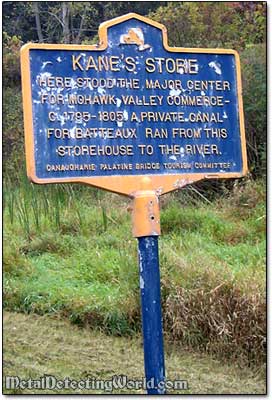Treasure Hunting with Rodney In Canajoharie, Montgomery County (Story 7) - History
Before proceeding further into the story, I would like to give you some geographical and historical information on the area in focus. The town of Canajoharie is located south of the Mohawk River in Montgomery County (named in honor of Richard Montgomery, an American Revolutionary War general killed in 1775 at the Battle of Quebec), New York, United States. A village of Canajoharie is located 55 miles west of Albany, the capital of New York state, right off the New York State Thruway (officially the Governor Thomas E. Dewey Thruway) that follows the Mohawk river.
New York State Thruway Overpass
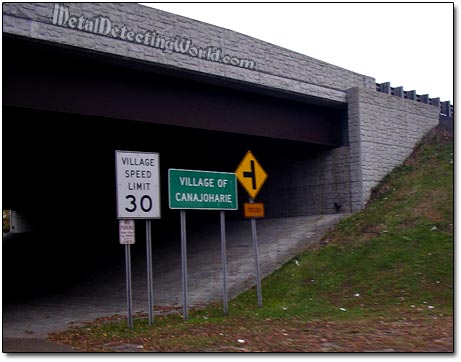
The name ‘Canajoharie’ is supposed to be an Iroquois term meaning "the pot that washes itself" - a reference to the "Canajoharie Boiling Pot," a circular gorge in the Canajoharie Creek, just south of the Canajoharie village.
The area was the site of a barricaded long house village - "Ossernenon Lower Mohawk Indian Castle," circa 1642-1659, of the Mohawk tribe of the Iroquois. Because it was originally surrounded by a palisade of poles, it looked like a castle to the locals. In the mid-1700's its population was around 250. The Indians replaced their traditional long houses by initially crude cabins and then eventually respectable frame houses.
The New York Historical Society Plaque Marks the Site of Indian Castle
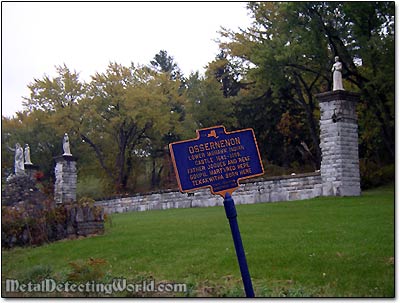
The town was first settled by whites around 1730, and was formed in 1788. The population of the town in 1865 was 4,248. In 2000 it was 3,797, and by July 2007 it had decreased to 2,172. The town’s ancestries: German (23.6%), Italian (12.7%), English (12.6%), Irish (11.7%), Dutch (6.4%), French (5.9%).
During the American Revolutionary War, the towns's sympathy was split between loyalists to the British and rebels. Many male citizens of the town were killed or wounded at the Battle of Oriskany (1777). Some residents were executed as Tory spies by rebels.
Most Native Americans supported the British. Like the Iroquois Confederacy, also known as the "League of Peace and Power", the "Five Nations", the "Six Nations", or the "People of the Longhouse", tribes such as the Cherokees and the Shawnees split into factions. For the most Native American tribes, the American Revolution became a civil war.
The Iroquois Confederacy originally consisted of five nations of Native Americans: the Mohawk, the Oneida, the Onondaga, the Cayuga, and the Seneca. A sixth tribe, the Tuscarora, joined after the original five nations were formed. The Six Nations divided over which side to take. Most Mohawks, Cayugas, Onondagas, and Senecas chose to ally themselves with the British. But the Oneidas and Tuscaroras, thanks in part to the influence of Presbyterian missionary Samuel Kirkland, joined the American revolutionaries.
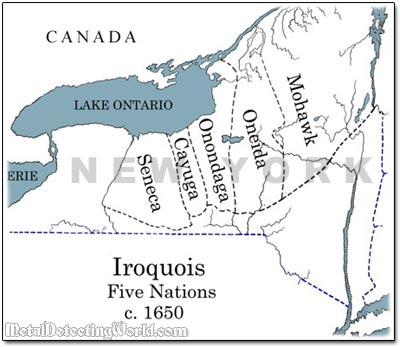
The British supplied their native allies with muskets and gunpowder and advised raids against civilian settlements, especially in New York, Kentucky, and Pennsylvania. The most horrific massacre was conducted by British and Seneca Indian forces when they attacked the fort in Cherry Valley on November 11, 1778. Sixteen of the defenders were killed and more than thirty women and children and several townspeople were killed and scalped.
Map of Cherry Valley at the Time of the Massacre
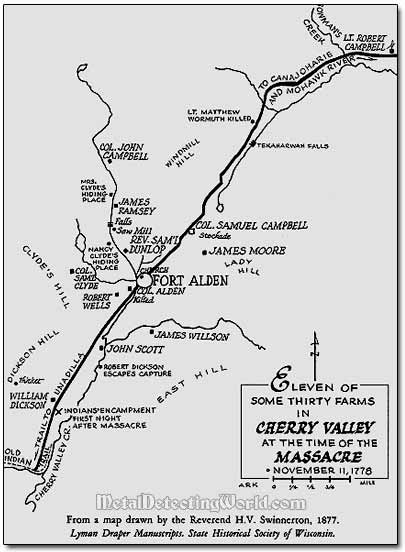
Joint Iroquois-Loyalist attacks in the Wyoming Valley and at Cherry Valley in 1778 provoked George Washington to send the Sullivan Expedition, a campaign led by Major General John Sullivan and General James Clinton against Loyalists ("Tories") and the four nations of the Iroquois who had sided with the British, into western New York during the summer of 1779.
The town of Canajoharie was a temporary headquarters during that expedition. After winning a major battle, at Newtown along the Chemung River in western New York, Sullivan's army then carried out a scorched earth campaign, methodically destroying at least forty Iroquois villages throughout what is now upstate New York, in retaliation for Iroquois and Tory attacks against American settlements earlier in the war.
Sullivan systematically destroyed the Native American winter food supplies, forcing them to flee permanently to British bases in Canada and the Niagara Falls area. The devastation created great hardships for the thousands of Iroquois refugees outside Fort Niagara that winter, and many starved or froze to death. The survivors fled to Canada and Buffalo areas. A year later, in August of 1780, the town of Canajoharie was burned down by four hundred Indians and Tories led by the commanders Sayenqueraghta, Cornplanter and Joseph Brant.
Retaining Stonewall - One of Many 'Ghosts from the Past' Still Present in the Area
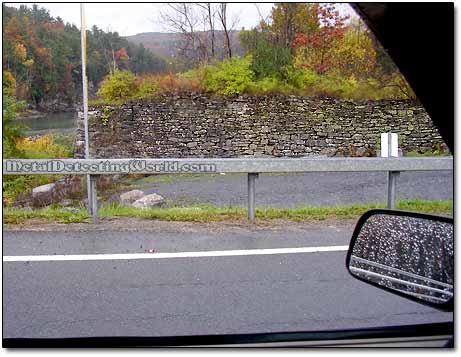
The village of Canajoharie is also known for Beech-Nut, the baby food producer, which was founded in Canajoharie in 1891 and served as the largest employer in the town for over a century. Also Susan B. Anthony, women's rights pioneer, taught school here.
A Mill Stone - Another Artifact from Early America
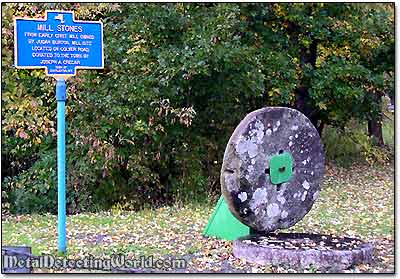
The Historical Society Plaques Are Everywhere You Look
